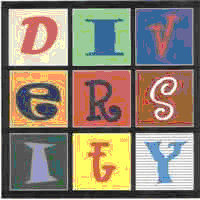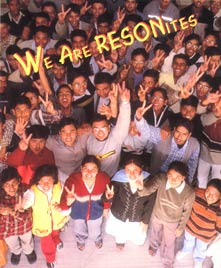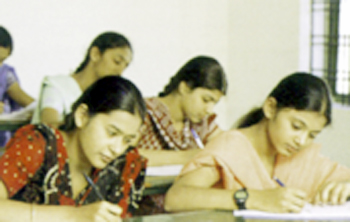|
A Note on Normalization
We’d like to
make a point about the normalization system before we
examine the issues. It
is a purely merit based, transparent system that has been
appreciated by many, including the honorable Supreme Court.
Dr. Raghurama says “Many institutions wanted to
follow the normalization procedure abandoning their existing
entrance tests since they found many problems with the
tests. In fact, some institutions have started following the
normalization procedure”.
The system
clearly aims at fairness. This means that all Board toppers
in
India
, irrespective of their
actual marks, are admitted to Pilani every year.
It is quite interesting that BITS gets 16-17 Board
toppers every year, clearly to its advantage in attracting
the best student from every state in India.
However, the
problem is that the system works in theory, but no longer in
practice. Here’s why.
The Issue of Brand
BITS has a significant branding issue in many states in India. According to the Vice
Chancellor (at a meeting in the
Silicon Valley
recently) he observed that
students from certain southern states are willing to come to
BITS irrespective of what degree is offered to them, because
the value of the BITS brand is so high. Ashish Garg (’97 Instru), an alum from UP
mentioned that in his hometown, Dehradun, BITS is not well
known. Students
from his class preferred to go to lesser-ranked schools if
they did not obtain the degrees of choice at BITS (which
generally are EEE and Computer Science).
 Dr
KRVS “Raja” Subramanian,
KRVS)
former Former
Head of Computer Science Department & Dean of Distance
Learning, adds “If an applicant needs to improve his/her
chances of getting admitted, he/she must not "cross
out" any option. There are so many times I have seen
guys with huge percentages just apply for EEE, CS and Mech,
(or a select few disciplines) and crossing out all other
options. Based on the competition, if he does not get the
above 3, he has kicked himself out of reckoning from all
others.” He
adds that a significant proportion of students do this. Dr
KRVS “Raja” Subramanian,
KRVS)
former Former
Head of Computer Science Department & Dean of Distance
Learning, adds “If an applicant needs to improve his/her
chances of getting admitted, he/she must not "cross
out" any option. There are so many times I have seen
guys with huge percentages just apply for EEE, CS and Mech,
(or a select few disciplines) and crossing out all other
options. Based on the competition, if he does not get the
above 3, he has kicked himself out of reckoning from all
others.” He
adds that a significant proportion of students do this.
KRVS then goes on
to compare the pattern of filling applications from AP, TN
and
Maharashtra
, “In this category, the number of persons crossing out options at all
is very insignificant. These guys appear to be ready to go
to BITS and do anything” he says.
We risk making a
“chicken and the egg” argument if we look at only a
snapshot of this data. We believe there is a lack of role
models in many Indian states which reduces the brand
awareness of BITS so significantly. If admissions began
creeping up in these regions, the awareness would result in
more champions for BITS Pilani, and may gradually drive up
applications in under-represented states.
What’s wrong with the Boards ?
What about the actual numbers coming from various Boards? According to
KRVS, approx. 35% students came from the CBSE Board (till
2001), followed by Boards of two primary states in
India
.
This changed when the AP Board students became the
largest group in the last two years, causing the current
uproar.
Problem #1: Timing of Declaring Exam results
KRVS admits that
the application date presents a problem for key Northern
states. He says “The last date for receiving applications
at Pilani is
30 June 2003
. There are a number of
boards which have almost never released the results of Class
XII exams before this date. Examples of these are UP,
Rajasthan,
Punjab
(and oh, there are others
too). During those few occasions when these results were
released on time, we found that the number of applicants
from these boards were relatively smaller.”
This is likely
due to the lack of role models; although we have seen that a
significant percentage of second semester admits seem to
come from the Northern States, although these total numbers
are quite small, since only a few seats are offered in the
second semester.
Problem #2: The Language Issue. Or the “Scourge of English”
in the CBSE Board
One issue is the
BITS decision to have a broader focus – Language plus PCM
instead of PCM alone. This
is good for Boards where it is easy to get high marks in the
Language. For
city dwellers, who generally take the CBSE Board and choose
English, it means that there is very little chance of them
getting into BITS. CBSE
Board students entering BITS generally choose Hindi, French
or some regional language where one can get 95-100% in the
exams. Those who took English will know how hard it is to
get more than 70%-80% in these exams. With the normalization
cutoff hovering around 98%, CBSE students who take English
or a difficult-to-score regional language are always at a
disadvantage. Ganesh
says “In the TN board it is not uncommon to get close to
100% in French and Sanskrit.”
According to an
ISC Board student “The same is true for the ISC board
where it is tough to score good marks in English. A lot of
students who have high PCM marks but low marks in English
lose out due to the normalization based on EPCM.”
Santhana
Satagopan (’90, TN
Board) says “Language should not be part of any admission
criteria. Look at all the Chinese/Taiwanese students in Grad
schools here [in US]. Not great in spoken and/or written
English, but fairly intelligent and hard working
students.”
Problem #3: Skewed marking
Normalization
works if all Boards allot scores on a similar, say bell
curve. If there is a major skew near the top, with
concentration of a number of people in the same area, it
would result in very high normalization results. The skew is
the reason why normalization fails in the AP case.
Bhavana Thudi (’97
EEE) from the AP Board says, “In addition to the
hard working, seat-deserving AP student, there are many
students who take advantage of the easy scoring exams.”
Another student noted that the AP system is not
controversy-free. We agree with Bhavana’s view about the
AP Board that “Currently, the remarkable concentration of
high percentages” requires a careful review of their (AP
Board’s) system.
What’s the fallout of all this ?
There are two problems
both of which may have a long-term detrimental impact on the
BITS brand.
.
Problem #1: The importance of diversity
 Diversity
can be defined in many ways – religion, geography, gender,
income levels etc. We don’t want to be drawn into an
academic debate on diversity, so we’ll quote from The
Office of Diversity at the Rensselaer Polytechnic Institute.
The Office says “Students graduating today will live and
work in a global community of myriad geographies and
cultures. We should provide them the opportunity to learn in
one as well.” Diversity
can be defined in many ways – religion, geography, gender,
income levels etc. We don’t want to be drawn into an
academic debate on diversity, so we’ll quote from The
Office of Diversity at the Rensselaer Polytechnic Institute.
The Office says “Students graduating today will live and
work in a global community of myriad geographies and
cultures. We should provide them the opportunity to learn in
one as well.”
We agree with
this emphasis on creating diversity at universities based on
geography and cultures, and add a third – gender, since we
believe it is important.
Our conclusion
– Only by living and learning in a diverse environment
representative of the outside world will we be trained to
work and live in it.
Sandeep
Mukherjee (’95
ISC Board) says “In the Indian context there's a definite
relationship between the region an applicant is from and
his/her style of thinking, working, goals so a predominantly
single, dual-state applicant pool is certainly not
diverse.” BITS Pilani has gender diversity, but lacks
geographic and cultural diversity found in the Indian
workplace. The
current system of admissions does not address it.
If you speak to
successful BITSians, they will say that BITS created
well-rounded students, which was due to a combination of the
curriculum and the peer group that consisted of Marwaris,
Oriyas, Mallus, Gults and Illar men and women, working side
by side with Punjabis, Bhaiyas and Choms to solve problems
ranging from a difficult integration exercise in Complex
Equations to figuring out how to land a chopper on stage.
This experience was invaluable. Almost every BITSian
CEO, entrepreneur and corporate leader, in fact every
BITSian who has experienced diversity will tell you this.
Gender diversity
makes BITS unique too, and we’ll discuss this later.
BITS does not
have diversity as a stated goal, but it is important enough
to merit consideration in designing an admissions process.
Problem #2: The Question of Student Quality
We cannot run IQ tests on
every BITSian applicant. So it is difficult to know whether
the student quality is going down academically.
BITS has gained in prestige in the last two decades,
as the demand for brand-name engineering degrees has grown
substantially. So
it is difficult to say whether there is a marked
deterioration of quality when we accept the top 400 students
from AP and say, the top 40 from
Maharashtra
.
But fundamentally it is difficult to accept that so
many students from one state are better than a fraction of
students from another state.
BITS MAKES CHANGES TO THE Current system
Dr Raghurama says
that is not possible for BITS to grade different boards
differently for the purpose of admissions or try and
establish create quotas. Any such attempts go against the
BITS philosophy of being transparent, distort the well
understood, albeit controversial current system, and be
subject to legal challenges.
Dr. Raghurama
adds “So in 2004, BITS made a few tweaks to its
normalization method to improve it. Though the procedure
adopted was still normalization of marks, the provision the
AP Board had of writing improvement exams for class 11 was
not considered for admissions to the Institute.
This resulted in a significant reduction in AP
students on the Pilani campus in 2004”.
We believe the
seats went to TN.
The Central Board
of Secondary Education (CBSE) operationally has five regions
throughout India. The toppers of these five
zones were considered separately and their marks normalized
separately. State Boards like the Maharashtra State Board,
J&K Board which had more than one division in the state
were also considered for separate normalization.”
But although the
same numbers of AP Board students could not make it to
Pilani campus, which typically was the first choice, large
numbers fell into the bottom half of the cutoff, and they
ended up getting admitted to the Goa campus, which has 560
seats this year. According
to a comment made by a BITS Goa
student, a significant
majority percentage of the
Goa
students are from AP.
Approx. 35 students are from
Maharashtra
and
Goa
and approx. 75 are from the
rest of India.
The struggle to find a solution continues.
KRVS emphatically
states that “The only system that can be designed to
provide [a desired] uniformity of geographical distribution
would be some form of a "quota system". In my
opinion, BITS has rightly rejected the quota system!”
So what other
options are available to BITS ?
OPTION 1: Should BITS join the IIT JEE
System?
 BITS
suggested that it be allowed to join the IIT-JEE system.
However, this was not approved by the government. The
IITs, being an autonomous body themselves, possibly wanted
their system to be independent of others. BITS
suggested that it be allowed to join the IIT-JEE system.
However, this was not approved by the government. The
IITs, being an autonomous body themselves, possibly wanted
their system to be independent of others.
Even if BITS were
allowed to join the IIT-JEE system, it would be no reason to
celebrate.
Left photo: An ad for an IIT JEE
preparation school in Kota, Rajasthan
There are a
number of weaknesses with the IIT JEE system.
Firstly, the system suffers from a lack of class and
gender diversity. “The typical IIT student is male, hails
from an urban middle class family” says Frontline Magazine
in an article in 2003, and then points out that “The IITs
have an even more dismal record in admitting women.”
Let us discuss
the IIT JEE Exam preparation.
Preparation for IIT JEE begins as early as the 9th
standard, and a very high percentage of entrants are taking
the exam for the second or the third time.
Typical IIT entrants come from urban cities where the
coaching standards are quite high. The one exception is the
small town of
Kota
, Rajasthan which accounts
for a startling one third entrants to the IITs.
(2002 figures, Indian Express).
There are 90
institutes in Kota, of which Bansal stands head
and shoulders above the rest (484 IITans in 2002!). The centers are huge money-spinners, with annual fees
of Rs 40,000 per student, and salaries of Rs 10 to 15 lakh to
faculty members, 40 per cent of whom are ex-IITians.
Kota students focus on
preparations for the IITs, and their attendance to coaching
classes is accepted in lieu of classroom study for 11th
and 12th standard Board exams in the city. Board
exams are an unwanted distraction for IIT aspirants. This is
an important reason why people who get into IITs typically
don’t get into BITS Pilani either.
You either study for the Boards or the IITs.
The IIT
preparation is grueling, expensive and has barriers to
entry. The top JEE coaching institutes in India
have entrance exams to enter
the coaching classes !
Coaching for
Board exams, on the other hand, is clearly not as expensive,
nor does one need to physically relocate oneself. This makes the BITS system equitable from a cost
standpoint.
We do not argue
that the IIT JEE system, (if we could join), would give
BITSians access to a similar pool of hard-working,
intelligent, male, mostly urban, students that IITs have
today. It will
leave out the poor, those from semi-urban and rural areas
and almost all women.
OPTION 2: Should BITS join AIEEE?
BITS fought so
hard to avoid being put into the AIEEE system, which is used
to admit students to 42 colleges in
India
. (Source: AIEEE website) Why is this not in BITS’ interest?
Before we
undertake an analysis there are two interesting bits of
information. Firstly, 50% of all AIEEE seats are filled by
Andhra students, due to their strong showing in these exams.
Secondly, if BITS were to go to the AIEEE exam, simulations
have shown that the geographic distribution will look no
different than it does today – with a tremendous skew to
one or at most two states.
These are not the reasons why BITS does not want to
join AIEEE, but it is important to know this. We can only
speculate.
Firstly, most of
these colleges are second and third tier schools. Secondly,
under AIEEE, the students are allotted their engineering
seats centrally. Thirdly,
as some members of the BITSAA Delhi chapter pointed out, the
AIEEE exam is only for Engineering and not for Science and
other subjects. This would complicate admissions to dual
degree programs at BITS, which uses the same exam for all
admissions. Fourthly,
the examinations are administered by the government, and
there are bound to be potential delays, and even the
possibility of the system being manipulated or cheated. For
these reasons, AIEEE is considered unacceptable to BITS.
OPTION 3: Should BITS conduct its own EXAM?
KRVS says “Let me tell you that there is no emotional attachment to
the existing system at BITS. There is a constant debate
regarding nearly all aspects of education. Too many things
change at BITS, but admission seem to have fewer changes.
That does not mean there is a lack of debate on that. Far
from it, I have participated in some many such discussions
that have gone for such long hours that I have hardly spent
any time with my daughter at home.”
We believe that
BITS is not wedded to the normalization process. But having
examined the existing alternatives, there are three pressing
problems that would occur if BITS implemented any entrance
system, be it JEE, AIEEE or something similar.
Problem #1: Women will disappear at BITS
 One
of the reasons for continuing with the normalized system of
admission was the increasing number of the girl students
that are admitted to BITS every year (in the year 2003, a
student said 42 percent of the students admitted were
girls). Girls
are rare at other engineering schools, especially IITs where
students are required to take an entrance examination,
although they do better on the board exams.
It is quite well documented that girls do exceedingly
well in the boards, but don’t’ fare as well in entrance
exams. One
of the reasons for continuing with the normalized system of
admission was the increasing number of the girl students
that are admitted to BITS every year (in the year 2003, a
student said 42 percent of the students admitted were
girls). Girls
are rare at other engineering schools, especially IITs where
students are required to take an entrance examination,
although they do better on the board exams.
It is quite well documented that girls do exceedingly
well in the boards, but don’t’ fare as well in entrance
exams.
The reasons are
easily explained. According to Prof. Raghurama, girl
students have a disadvantage in competing for entrance exams
since the societal system does not favor them to attend
coaching classes which are critical to getting in.
Classes are held early morning or late at night,
which is a disadvantage for girls.
Ganesh agrees. “In the most popular coaching
classes in
Madras
, you might just find about
5-10 girls in a class of 100-150 !” he says.
Many parents with
scarce resources would also choose to invest the coaching
class money on boys rather than girls.
We have also
heard the comment often that many girls don’t think about
applying to engineering schools, so they do not prepare for
the JEE/AIEEE exams in large numbers. But when they obtain
high marks in the Board exams, it requires little additional
effort to send in an application to colleges like BITS that
accepts these results.
Problem #2: BITS will lose its 22-odd Board Toppers
Another issue was that
BITS attracts more than 15 board toppers every year and it
is sad that such bright students are denied education in
good Institutes simply because they concentrated on 12th
exams rather than entrance tests. As a fact, in the year
2004, 23 board toppers have joined BITS (22 at Pilani and
the
Goa
topper for very obvious
reasons joined
Goa
campus!).
Any option which totally ignored the performance of
the students at the 12th boards therefore did not seem to be
a satisfactory solution.
Problem #3: Students will be burdened with more exams and
costs
We discussed the
tremendous cost of IIT coaching. Another entrance exam will
add to the already existing multitude of exams and will be
considered as additional burden. While BITS management
always believed in critical analysis of existing systems and
open to procedures for improvement, it did not favor the
idea of abandoning the normalization scheme in a hurry and
taking up admissions purely on the basis of entrance
examinations.
The Proposal: A GRE-type exam
BITS has proposed
to conduct a computer-based entrance examination (something
along the lines of GRE but with a focus on Physics,
Chemistry and Mathematics).
Although this would mean another new exam, it has
many inherent advantages.
It is really a test of aptitude, so it is not
something that students have to prepare for 3-4 years (like
JEE) although there will be advantages in being coached. It
will be affordable, since students can study at home; and
even if they take coaching classes, it would not be as
expensive and could be done in the neighborhood. Girls will
appear for this exam in greater numbers than do for IIT JEE,
since it will be an extension of their Board-exam
preparations.
We believe that BITS should continue to place importance on the XIth and
XIIth standard education. The all-round development of the
child is provided by being in a collegial high-school
environment with a diverse range of activities rather than a
residential coaching institute.
It is a pity that school education is becoming
irrelevant to students in
India
,
especially for entrance exam takers. BITS could implement a
system that may give students another chance to return to
the classrooms at school.
BITS could also require students to score at least
80% in the Boards to qualify for the BITS GRE-type exam.
Dr. Raghurama says “The
Institute has suggested this exam to the UGC and the
government as a model for all universities. This would be
technically a ‘first of its kind’ in
India
and BITS could take
leadership in making it a reality. The admissions office and
core teams are preparing details “
In Conclusion
 We believe the end of the debate on the BITS admission procedure is
near, since we are confident that BITS will replace its
current system shortly.
It is willing to foot the entire bill for creating
the infrastructure around this exam. We believe the end of the debate on the BITS admission procedure is
near, since we are confident that BITS will replace its
current system shortly.
It is willing to foot the entire bill for creating
the infrastructure around this exam.
The GRE-type exam
is the only solution that will reduce, but not eliminate the
inherent problems with an entrance exam – it will mean
that less women will get in, but not drastically so, and the
students will be burdened with some additional coaching
costs.
We also propose
that BITS give automatic admission to the 20-odd Board
toppers that we get every year.
But their disciplines could be determined by their
performance on the GRE-type entrance exam.
It must be noted
that changing the current system will not guarantee
diversity. But
it will certainly be a bold attempt to regain it, and
potentially create the “gold standard” for entrance to
engineering schools in
India
, similar to the
much-respected exams in the
US
.
Dr. Raghurama
says “BITS management will announce the admission
procedure for the next academic year soon and announce it to
BITS aspirants well in time. “
We
are confident that BITS management will proactively make the
changes that will continue to shoulder BITS to new heights.
If you have any suggestions about this GRE-type, BITS
and especially Prof. Raghurama welcomes them.¨
|
(c) Copyright 2004 BITSAA International Inc. |
|
Website
by jPeople, YonEarth
and BITSAA Technology |
|

